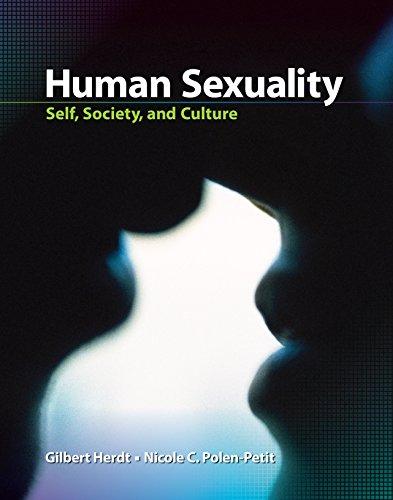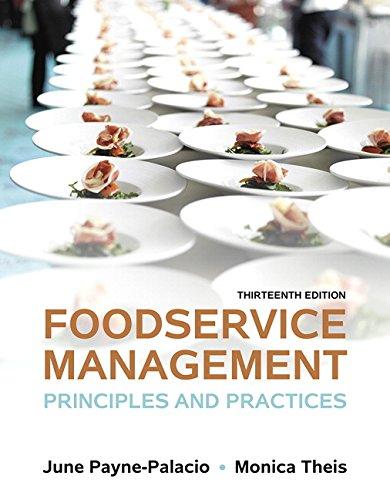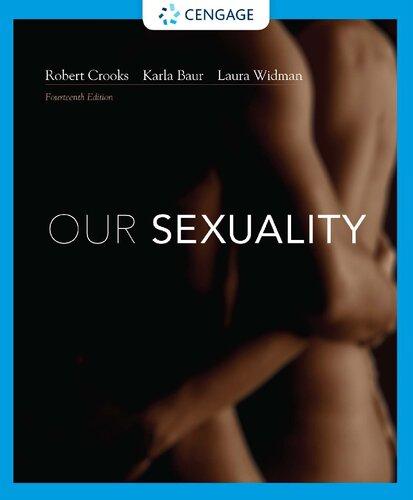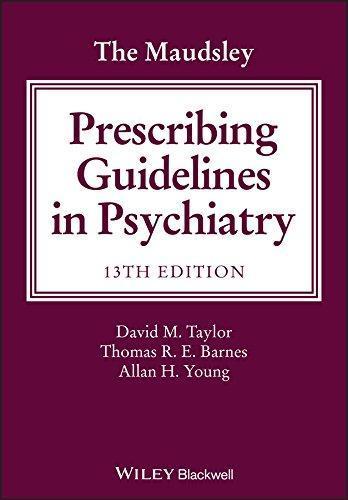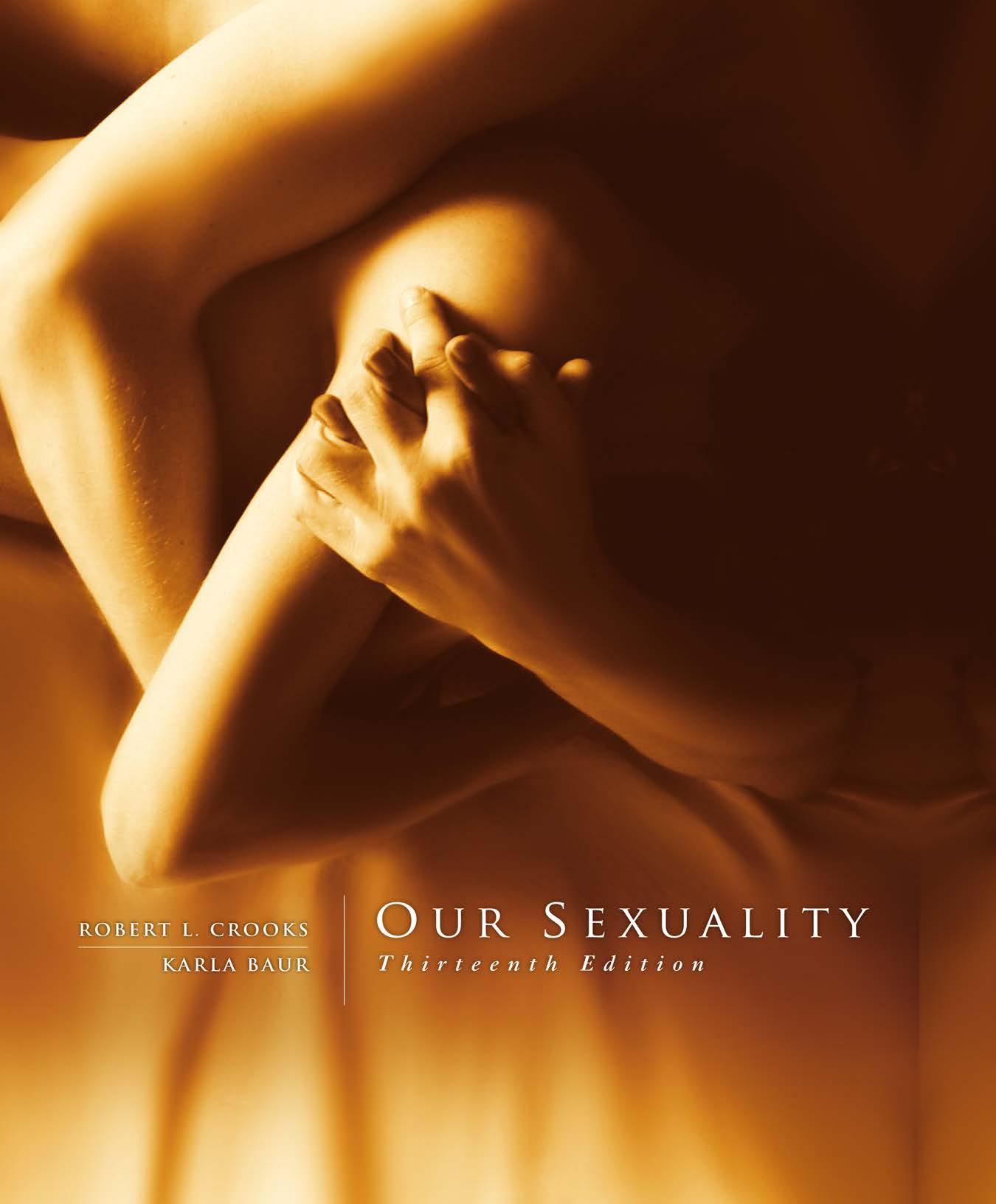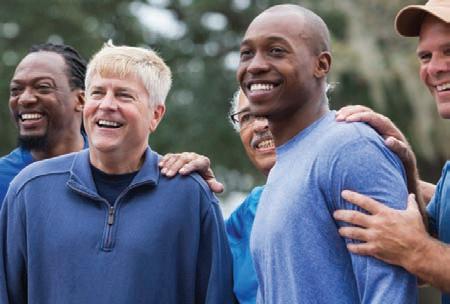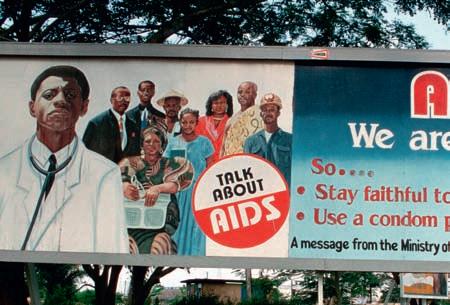About the Authors
The integration of psychological, social, and biological components of human sexuality in this text is facilitated by the blending of the authors’ academic and professional backgrounds.
Robert Crooks has a Ph.D. in psychology. His graduate training stressed clinical and physiological psychology. In addition, he has considerable background in sociology, which served as his minor throughout his graduate training. His involvement with teaching human sexuality classes at the university, college, and medical school levels spans over two decades. Recently Bob and his wife, Sami Tucker, have been involved in the establishment and implementation of another HIV/AIDS intervention program in coastal Kenya. Over the previous 10 years, their work with this project includes designing a research strategy for assessing behavior change, developing a peer educator-based educational strategy, and conducting training sessions for Kenyan peer educator staff. In the fall of 2009, Bob and Sami initiated another HIV/AIDS intervention program in Tanzania. Over the previous seven years they have traveled extensively in Africa and have devoted many months to their evolving HIV/AIDS prevention projects.
Karla Baur has a master’s degree in social work; her advanced academic work stressed clinical training. She has had an extensive career as a licensed clinical social worker in private practice, specializing in couples and sex therapy. Karla has provided clinical supervision, seminars and lectures for other mental health professionals and professional groups. She has taught human sexuality and female sexuality classes at Portland Community College, Portland State University and Clark College. At Oregon Health Sciences University she taught a human sexuality course and coached medical students in taking sexual histories with patients. Karla was also involved in a 6 week program in Kenya to train HIV/AIDS Prevention Peer Educators. She has been certified as a sex educator, therapist, and sex therapy supervisor by the American Association of Sex Educators, Counselors, and Therapists. She is currently developing a play about the nuances and complexities of male sexuality with her collaborator, composer/writer Fred Strong.
The authors have a combined total of over 70 years of teaching, counseling, and research in the field of sexology. They team-taught college sexuality courses for a number of years. They have presented workshops and guest lectures to a wide variety of professional and community groups, and they have counseled individuals, couples, and families on sexual concerns. Their combined teaching, clinical, and research experiences, together with their graduate training, have provided them with an appreciation and sensitive understanding of the highly complex and personal nature of human sexuality.
It is the authors’ belief that a truly sensitive understanding of our sexuality must be grounded in both the female and the male perspectives and experiences. In this sense, their courses, their students, and this text have benefited from a well-balanced perception and a deep appreciation of human sexual behavior.
Prologue xxx
Chap TE r 1
Sexual Intelligence 2 A Psychosocial Orientation 3
Controversy and Diversity in Human Sexuality 4
The United States 4
LET’S Ta LK a BOUT IT A Child/Parent Sex Talk 5
The Islamic Middle East 7
China 8
Our Cultural Legacy: Sex for Procreation and Rigid Gender Roles 9
Sex for Procreation 9
Male and Female Gender Roles in Sexuality 10
Sexuality in the Western World: A Historical Perspective 12
Judaic and Christian Traditions 12
Sex as Sinful 13
Eve Versus Mary 14
A Sex-Positive Shift 14
The Victorian Era 15
SEXUa LITY & DIVE rSITY Slavery’s Assault on Sexuality and Gender Roles 16
The Beginning of the 20th Century 17
After World War II 18
The Times They Are a-Changin’ 19
The Media and Sexuality 20
Television 21
Music Videos 23
Advertising 24
Magazines 24
The Internet and Sexuality 24
Sexuality: Where the Personal Is Political 26
Summary 27
The Goals of Sexology 30
Nonexperimental Research Methods 31
Case Studies 32
Surveys 33
SEX aND pOLITICS Sex Research Under Siege 38
Direct Observation 40
The Experimental Method 41
Technologies in Sex Research 43
Electronic Devices for Measuring Sexual Arousal 43
Computerized Assessment of Sexual Behavior 44
Sex Research via the Internet 45
Ethical Guidelines for Human Sex Research 46
Evaluating Research: Some Questions to Ask 47
Summary 48
Chap TE r 3
Female Sexual Anatomy and Physiology 50
The Vulva 51
The Mons Veneris 51
The Labia Majora 53
The Labia Minora 53
Genital Alteration 53
YOU r SEXUa L hEa LT h Genital Self-Exam for Women 54
The Clitoris 56
SEXUa LITY & DIVE rSITY Female Genital Cutting: Torture or Tradition? 57
The Vestibule 58
The Urethral Opening 59
The Introitus and the Hymen 59
The Perineum 59
Underlying Structures 60
Internal Structures 61
The Vagina 62
YOU r SEXUa L hEa LT h Kegel Exercises 63
The Cervix 65
The Uterus 65
The Fallopian Tubes 65
The Ovaries 66
Menstruation 66
Attitudes About Menstruation 66
Menarche 68
Menstrual Physiology 68
The Menstrual Cycle 69
Sexual Activity and the Menstrual Cycle 71
Menstrual Cycle Problems 72
Menopause 74
Hormone Therapy 75
Gynecological Health Concerns 78
Urinary Tract Infections 78
Vaginal Infections 78
The Pap Smear 79
Surgical Removal of the Uterus and Ovaries 79
The Breasts 80
Breast Self-Exam 82
Breast Cancer Screening 83
YOU r SEXUa L hEa LT h How to Examine Your Breasts 84
Breast Lumps 84
Breast Cancer 85
Summary 88
Chap TE r 4
Male Sexual Anatomy and Physiology 90
Sexual Anatomy 91
The Penis 91
SEXUa LITY & DIVE rSITY
Male Genital Modification: Cultural Beliefs and Practices 92
Strengthening Musculature Around the Penis 94
The Scrotum 95
The Testes 96
YOU r SEXUa L hEa LT h Male Genital Self-Examination 98
The Vas Deferens 99
The Seminal Vesicles 100
The Prostate Gland 100
The Cowper’s Glands 100
Semen 100
Male Sexual Functions 101
Erection 101
Ejaculation 102
Concerns About Sexual Functioning 103
Penis Size 104
SEXUa LITY & DIVE rSITY Koro: The Genital Retraction Syndrome 106
Circumcision 107
SEX aND pOLITICS “Intactivists” Attempt to Criminalize Infant Circumcision in San Francisco 108
Male Genital Health Concerns 109
The Penis: Health-Care Issues 109
Testicular Cancer 111
Diseases of the Prostate 111
Summary 114
Chap TE r 5
Gender Issues 116
Male and Female, Masculine and Feminine 117
Sex and Gender 117
Gender Identity and Gender Role 118
Gender-Identity Formation 118
Gender Identity as a Biological Process: Typical Prenatal Differentiation 118
Differences in Sexual Development 126
Sex-Chromosome Variations 126
Variations Affecting Prenatal Hormonal Processes 128
Social-Learning Influences on Gender Identity 130
Treatment Strategies for Intersex People: Debate and Controversy 132
The Interactional Model of Gender Development 134
Gender Identity: A Spectrum 134
Transgender Variations: An Evolving Terminology 135
LET’S Ta LK a BOUT IT Respectful Communication With a Transgender Individual 136 Transitioning 137
Sexual Orientation of Transgender Men and Women 138
Understanding the Development of Transgender Individuals 138
Acceptance and Civil Rights 139
Gender Roles 140
Sp OTLIGh T ON r ESE arCh Cross-Cultural Sex Differences in Personality Traits 141 How Do We Learn Gender Roles? 142
SEXUa LITY & DIVE rSITY Ethnic Variations in Gender Roles 142
Gender-Role Expectations: Their Impact on Our Sexuality 147
Summary 150
Chap TE r 6
Sexual Arousal and Response
The Brain and Sexual Arousal 152
151
SEXUa LITY & DIVE rSITY Cultural Variations in Sexual Arousal 153
Sp OTLIGh T ON r ESE arCh Monitoring Brain Function During Sexual Arousal With Functional Magnetic Resonance Imaging 155
The Senses and Sexual Arousal 156
Touch 156
Vision 157
Smell 158
Taste 159
Hearing 159
Aphrodisiacs and Anaphrodisiacs in Sexual Arousal 160
Aphrodisiacs: Do They Work? 160
Anaphrodisiacs 163
The Role of Hormones in Sexual Behavior 164
Sex Hormones in Male Sexual Behavior 165
Sex Hormones in Female Sexual Behavior 166
How Much Testosterone Is Necessary for Normal Sexual Functioning? 167
Testosterone Replacement Therapy 168
Oxytocin in Male and Female Sexual Behavior 169
Sexual Response 170
Kaplan’s Three-Stage Model 170
Bancroft and Janssen’s Dual Control Model of Sexual Response 171
Masters and Johnson’s Four-Phase Model 171
Sp OTLIGh T ON r ESE arCh Monitoring Genital Changes During Sexual Arousal With Functional Magnetic Resonance Imaging 173
SEXUa LITY & DIVE rSITY Subjective Descriptions of Orgasm 176
The Grafenberg Spot 177
Aging and the Sexual Response Cycle 179
The Sexual Response Cycle of Older Women 179
The Sexual Response Cycle of Older Men 180
Differences Between the Sexes in Sexual Response 181
Greater Variability in Female Response 181
Sp OTLIGh T ON r ESE arCh Sex Differences in Sex Drive 182
The Male Refractory Period 183
Multiple Orgasms 183
Summary 186
Chap TE r 7
Love and Communication in Intimate Relationships
188
What Is Love? 189
Types of Love 190
Passionate Love 190
Companionate Love 191
Sternberg’s Triangular Theory of Love 192
Lee’s Styles of Loving 194
Falling in Love: Why and With Whom? 195
The Chemistry of Love 195
Proximity 196
Similarity 197
SEXUa LITY & DIVE rSITY Partner Choice and Race 198
Reciprocity 199
Physical Attractiveness 199
SEXUa LITY & DIVE rSITY Differences Between American Men and Women in Mate Selection Preferences 200
Love and Styles of Attachment 201
Attachment Styles 202
Adult Intimate Relationships as an Attachment Process 203
Issues in Loving Relationships 204
What Is the Relationship Between Love and Sex? 204
Jealousy in Relationships 207
Maintaining Relationship Satisfaction 208
Ingredients in a Lasting Love Relationship 208
LET’S Ta LK a BOUT IT Coping With Jealousy, the Green-Eyed Monster 209
Sexual Variety: An Important Ingredient 211
The Importance of Sexual Communication 212
Talking: Getting Started 212
Talking About Talking 212
LET’S Ta LK a BOUT IT
The Benefits of Affectionate Communication 213
Reading and Discussing 213
Sharing Sexual Histories 213
Listening and Feedback 214
Be an Active Listener 214
Maintain Eye Contact 214
Provide Feedback 215
Support Your Partner’s Communication Efforts 215
Express Unconditional Positive Regard 215
Discovering Your Partner’s Needs 215
Asking Questions 216
Self-Disclosure 217
Discussing Sexual Preferences 219
Giving Permission 219
Learning to Make Requests 219
Taking Responsibility for Our Own Pleasure 220
Making Requests Specific 220
Using “I” Language 220
Expressing and Receiving Complaints 221
Constructive Strategies for Expressing Complaints 221
LET’S Ta LK a BOUT IT Consent for Everyone! 222
Receiving Complaints 226
Saying No 227
A Three-Step Approach to Saying No 228
Avoid Sending Mixed Messages 228
Nonverbal Sexual Communication 229
Facial Expressions 229
Interpersonal Distance 230
Touching 230
Sounds 230
Communication Patterns in Successful and Unsuccessful Relationships 231
Gottman’s Constructive Communication Tactics 231
Gottman’s Destructive Communication Tactics 232
Summary 234
Chap TE r 8
Sexual
Behaviors
Celibacy 238
Erotic Dreams and Fantasy 239
Erotic Dreams 239
Erotic Fantasy 239
237
Male/Female Similarities and Differences in Sexual Fantasy 241
Fantasies: Help or Hindrance? 241
Masturbation 242
Perspectives on Masturbation 242
Purposes of Masturbation 244
Ethnicity and Masturbation 246
Self-Pleasuring Techniques 246
Sexual Expression: The Importance of Context 247
The Context of Sexual Expression 248
The Maltz Hierarchy 248
Frequency of Partner Sexual Activity 250
Kissing and Touching 251
Kissing 251
Touching 252
Oral–Genital Stimulation 253
SEXUa LITY & DIVE rSITY Oral Sex Experiences Among American Men and Women 255
Anal Sex Play and Penetration 256
Coitus and Coital Positions 257
Kink Lite 260
Intercourse the Tantric Way 261
Summary 262
Chap TE r 9
Sexual Orientations 264
A Continuum of Sexual Orientations 265
Sexual Fluidity 266
Asexuality 267
Bisexuality 268
Homosexuality 270
What Determines Sexual Orientation? 271
Psychosocial Theories 271
Research Into Biological Factors 272
Sp OTLIGh T ON r ESE arCh Where Does Straight End and Gay Begin? 273
Societal Attitudes Regarding Homosexuality 275
SEXUa LITY & DIVE rSITY Homosexuality in Cross-Cultural Perspective 275
Judeo-Christian Attitudes Toward Homosexuality 277
From Sin to Sickness 278
Homophobia 279
The Gay Rights Movement 281
The Stonewall Incident and Beyond 282
Decriminalization of Private Sexual Behavior 282
Antidiscrimination 282
Legal Civil Marriage for Same-Sex Couples 283
Homosexuality and the Media 285 Coming Out 286
LET’S Ta LK a BOUT IT Guidelines for Coming Out to Friends 290
Homosexual Relationships in Context 292
Summary 295
Chap TE r 10
Contraception 297
Historical and Social Perspectives 298
Contraception in the United States 298
Contraception as a Contemporary Issue 299
SEX aND pOLITICS The Power of Pro-Life Anti-Contraception Politics 300
The Importance of Access to Contraception 301
Contraception as a Global Issue 302
Sharing Responsibility and Choosing a Birth Control Method 303
It Takes Two 303
Choosing a Birth Control Method 304
“Outercourse” 309
YOU r SEXUa L hEa LT h Which Contraceptive Method Is Best for You? 310
Hormone-Based Contraceptives 310
Oral Contraceptives 310
The Vaginal Ring and the Transdermal Patch 313
Injected Contraceptives 313
Contraceptive Implant 314
Barrier and Spermicide Methods 314
Condoms 314
LET’S Ta LK a BOUT IT Don’t Go Inside Without Your Rubbers On 316
Vaginal Spermicides 317
Cervical Barrier Devices 319
Intrauterine Devices 320
How the IUD Works 321
Emergency Contraception 322
Fertility Awareness Methods 324
Standard Days Method 324
Mucus Method 325
Calendar Method 325
Basal Body Temperature Method 325
Sterilization 326
Female Sterilization 326
Male Sterilization 327
Unreliable Methods 328
Nursing 328
Withdrawal 328
Douching 328
New Directions in Contraception 329
New Directions for Men 329
New Directions for Women 329
Summary 330
Chap TE r 11
Conceiving Children: Process and Choice 332
Parenthood as an Option 333
Becoming Pregnant 334
Enhancing the Possibility of Conception 334
SEXUa LITY & DIVE rSITY Preselecting a Baby’s Sex: Technology and Cross-Cultural Issues 334
Infertility 335
Reproductive Alternatives 338
Pregnancy Detection 341
Spontaneous and Elective Abortion 342
Miscarriage and Stillbirth 342
Elective Abortion 343
How Women Decide 343
Shared Responsibility 343
Psychological Reactions to Abortion 344
Pregnancy Risk Taking and Abortion 344
Rates of Abortion 345
Procedures for Abortion 345
Illegal Abortions 347
The Abortion Controversy 348
SEX aND pOLITICS Abortion Restrictions at the State Level 350
The Experience of Pregnancy 352
The Woman’s Experience 352
The Man’s Experience 353
Sexual Interaction During Pregnancy 353
A Healthy Pregnancy 354
Fetal Development 354
Prenatal Care 355
YOU r SEXUa L hEa LT h Folic Acid and Fetal Development 357
Risks to Fetal Development 358
Pregnancy After Age 35 360
Fatherhood After Age 45 360
Childbirth 360
Contemporary Childbirth 361
Stages of Childbirth 361
After Childbirth 363
Breast-Feeding 364
Sexual Interaction After Childbirth 366
Summary 368
Chap TE r 12
Sexuality During Childhood and Adolescence
369
Sexual Behavior During Infancy and Childhood 370
Infant Sexuality 370
Childhood Sexuality 371
The Physical Changes of Adolescence 375
SEXUa LITY & DIVE rSITY American Ethnic Diversity in Age at Menarche 376
Sexual Behavior During Adolescence 378
The Sexual Double Standard 378
Masturbation 379
Noncoital Sexual Expression 379
Ongoing Sexual Relationships 380
Adolescent Sexting 381
Sexual Intercourse 381
SEXUa LITY & DIVE rSITY American Ethnic Diversity in Adolescent Sexual Experiences 384
Homosexuality 387
SEX aND pOLITICS Antigay Harassment/Bullying of Teenagers 388
The Effect of AIDS on Teenage Sexual Behavior 389
Adolescent Pregnancy 390
Negative Consequences of Teenage Pregnancy 390
Use of Contraceptives 391
Strategies for Reducing Teenage Pregnancy 392
Sex Education 394
Answering Children’s Questions About Sex 394
Initiating Conversations When Children Do Not Ask Questions 395
School-Based Sex Education 397
SEX aND pOLITICS Abstinence-Only Sex Education 398
Summary 399
Chap TE r 13
Sexuality and the Adult Years 401
Single Living 402
Singles and the Internet 403
Cohabitation 404
Marriage 405
Marriage in Current Collectivist and Individualist Cultures 405
SEX aND pOLITICS Marriage in Crisis 407
SEXUa LITY & DIVE rSITY Where Women Choose 408
Marriage in the United States 409
Changing Expectations and Marital Patterns 410
Interracial Marriage 412
Predicting Marital Satisfaction 412
YOU r SEXUa L hEa LT h Know Your Partner 413
Sexual Behavior and Satisfaction in Marriage 414
Nonmonogamy 415
SEXUa LITY & DIVE rSITY Extramarital Sexuality in Other Cultures 415
Consensual Nonmonogamy 416
Nonconsensual Extramarital Relationships 417
Divorce 421
Explaining the High Divorce Rate 421
Reasons People Give for Divorce 422
Adjusting to Divorce or Breakup of Long-Term Relationships 422 Sexuality and Aging 423
The Double Standard and Aging 423
Sexual Activity in Later Years 424
Last Love 427
Widowhood 427
Summary 428
Chap TE r 14
Sexual Difficulties and Solutions 430
YOU r SEXUa L hEa LT h Index of Sexual Satisfaction 433
Specific Sexual Difficulties 434
Desire-Phase Difficulties 434
Excitement-Phase Difficulties 435
Orgasm-Phase Difficulties 436
Dyspareunia 438
Origins of Sexual Difficulties 440
Physiological Factors 440
Cultural Influences 445
Individual Factors 447
SEXUa LITY & DIVE rSITY Suffering for Beauty 449
Relationship Factors 451
Basics of Sexual Enhancement and Sex Therapy 452
Self-Awareness 453
Communication 453
Sensate Focus 454
SEXUa LITY & DIVE rSITY How Modern Sex Therapy Can Clash
With Cultural Values 455
Specific Suggestions for Women 456
Specific Suggestions for Men 458
Treating Hypoactive Sexual Desire Disorder 463
Seeking Professional Assistance 464
Summary 465
Chap TE r 15
Sexually Transmitted Infections 468
LET’S Ta LK a BOUT IT Telling a Partner 472
Bacterial Infections 472
Chlamydia Infection 473
Gonorrhea 474
Nongonococcal Urethritis 476
Syphilis 477
Viral Infections 479
Herpes 479
Genital Warts 484
Viral Hepatitis 487
SEX aND pOLITICS Arguments Against and for Mandatory HPV Vaccinations 488
Common Vaginal Infections 490
Bacterial Vaginosis 491
Candidiasis 492
Trichomoniasis 492
Ectoparasitic Infections 493
Pubic Lice 493
Scabies 494
Acquired Immunodeficiency Syndrome (AIDS) 495
Incidence 496
SEXUa LITY & DIVE rSITY AIDS in Africa: Death and Hope on a Ravaged Continent 499
Transmission 501
SpOTLIGhT ON rESEarCh Circumcision as a Strategy for Preventing HIV Infection 502
Symptoms and Complications 503
HIV Antibody Tests 504
Development of AIDS 505
Treatment 506
Prevention 510
Preventing Sexually Transmitted Infections 512
Prevention Guidelines 512
YOU r SEXUa L hEa LT h The Only Way to Best Determine if You or Your Partner(s) Do Not Have an STI is to Get Tested 514
Summary 517
Chap TE r 16
Atypical Sexual Behavior
521
What Constitutes Atypical Sexual Behavior? 522
Noncoercive Versus Coercive Paraphilias 524
Noncoercive Paraphilias 525
Fetishism 525
Transvestic Disorder 526
Sexual Sadism and Sexual Masochism 527
Other Noncoercive Paraphilias 530
Coercive Paraphilias 531
Exhibitionism 531
Obscene Phone Calls 533
Voyeurism 534
Other Coercive Paraphilias 536
Sexual Addiction: Fact, Fiction, or Misnomer? 537
Summary 540
Chap TE r 17
Sexual Coercion 542
Rape 543
Prevalence of Rape 543
False Beliefs About Rape 545
Factors Associated With Rape 546
YOU r SEXUa L hEa LT h Dealing With Rape and Attempted Rape 552
Wartime Rape 554
SEXUa LITY & DIVE rSITY Punishing Women Who Have Been Raped 555
The Aftermath of Rape 556
Rape and Sexual Assault of Males 557
LET’S Ta LK a BOUT IT Helping a Partner or Friend Recover From Rape 558
Sexual Abuse of Children 560
SEXUa LITY & DIVE rSITY Breast Ironing to Protect Girls From Sexual Victimization 561
Characteristics of People Who Sexually Abuse Children 562
Prevalence of Child Sexual Abuse 563
Recovered Memories of Childhood Sexual Abuse 564
Pedophiles on the Internet 566
Effects of Child Sexual Abuse 567
Preventing Child Sexual Abuse 568
When the Child Tells 570
Sexual Harassment 570
Varieties and Incidence of Sexual Harassment on the Job 572
Cyberstalking 575
Sexual Harassment in Academic Settings 575
Summary 577
Sex for Sale 580
Pornography 581
To Each His or Her Own 581
Erotica 582
Variations in Straight, Gay, and Lesbian Pornographic Films 583
Historical Overview 583
Freedom of Speech Versus Censorship 584
SEX aND pOLITICS Pornography as Social Criticism 585
Child Pornography 588
The Marriage of Technology and Sexually Explicit Materials 588
The “Pornification” of U.S. Culture 589
Is Pornography Helpful? 589
Is Pornography Harmful? 590
Sex Work 592
History of Prostitution and Sex Work 593
The Legal Status of Sex Work 594
Adult Male and Female Sex Workers 596
The Internet and Sex Work 599
Teenagers in Sex Work 599
The Personal Costs of Sex Work 599
Customers of Sex Workers 600
Glorification of Pimps in the United States 601
Worldwide Trafficking of Women and Children in Prostitution 601
Summary 603
Preface
Our Sexuality, now in its thirteenth edition, provides students with an engaging, personally relevant, politically astute, and academically sound introduction to human sexuality. The text’s comprehensive integration of biological, psychological, behavioral, cultural, and political aspects of sexuality has been consistently well received in each previous edition.
New in This Edition
CHAPTER 1: PERSPECTIVES ON S Ex UALITY
• Contraception exemption in Affordable Care Act as example of “the personal is political”
• Cross-cultural attitudes about casual sex
• Expanded research about the double standard
• New section on slut-shaming
• Updated information on sex in the media
• New photos
CHAPTER 2: S E x R ESEARCH: M ETHODS AND PROBLEMS
• Updates to citations and data throughout the chapter
CHAPTER 3: FEMALE S Ex UAL A NATOMY AND PHYSIOLOGY
• Updated information about labiaplasty
• Expanded detail about the clitoral complex and Grafenberg spot
• New data about clitoridectomy and eradication attempts
• New figure of pelvic neural pathways
• New concept of the clitourethrovaginal complex
• Expanded data on sexual impact of ovulation
• Variation in sexual effects of hysterectomy
• New photos
CHAPTER 4: M ALE S Ex UAL A NATOMY AND PHYSIOLOGY
• New citation and data for information about the testes
• New information included in “Semen” section
• Significant revision of information about circumcision
• New data about penile cancer
• New information about benign hyperplasia and prostate cancer
CHAPTER 5: G ENDER I SSUES
• New information on sex differentiation of the brain
• New information on sex-chromosome variations, including updates to the table outlining examples of differences in sexual development
• New information on gender roles
• Extensive revision and updates about differences in sexual development (DSD)
• New information about intersex activism
• Expanded discussion of gender diversity and terms that expand beyond the gender binary
• Inclusive use of term “transgender” and elimination of term “transsexual”
• Clarification of transitioning and gender confirmation surgery
• Updates about increased media presence, acceptance, and civil rights for transgender individuals
CHAPTER 6: S Ex UAL A ROUSAL AND R ESPONSE
• New information about the senses and sexual arousal
• New data on aphrodisiacs and anaphrodisiacs
• Extensive update about the role of hormones in sexual behavior
• New information on aging and the sexual response cycle
CHAPTER 7: LOVE AND C OMMUNICATION IN I NTIMATE R ELATIONSHIPS
• New information about falling in love with extensive updates on physical attractiveness
• Extensive updates about love and styles of attachment
• Major revision on relationship between love and sex
• New information on maintaining relationship satisfaction, especially in the “Ingredients” section
• New “Let’s Talk About It: Consent for Everyone!” box
CHAPTER 8: S Ex UAL B EHAVIORS
• Expanded information about sexual fantasy
• New table about who claims they have never masturbated
• New information about snuggle parties and professional cuddling
• Expanded discussion about anal sex
• New section on kink lite
• New photos
CHAPTER 9: S Ex UAL O RIENTATIONS
• New data about straight men and women and same-sex experiences
• Inclusion of new terms: sapiosexual, pansexual, polysexual, omnisexual, and queer
• Expanded information about bisexuality
• Extensive updated data about attitudes toward homosexuality and developments in gay rights
• Supreme Court decision to make gay marriage legal nationwide
• New table on where major religions stand on same-sex marriage
• Updates on “conversion therapy”
• New table on attitudes by religious affiliation
• Changes in the media regarding homosexuality
• Data about coming out as gay, lesbian, and bisexual
• Variations in frequency of orgasm by sexual orientation
• New photos
CHAPTER 10: C ONTRACEPTION
• Rates of unplanned pregnancy
• New section about the importance of access to contraception
• The Vatican’s prohibition of sterilization and impact on U.S. health system
• New table showing decrease in pregnancy with access to no-cost, long-acting reversible contraception
• Controversy about no-cost contraception through the Affordable Care Act
• Updated data about global use of contraception
• Importance of publicly-funded contraception
• Updated information about currently available contraceptives
• New table showing 10-year effectiveness rates of LARCs compared to other methods
• New figure of emergency contraception
• New developments in condoms
CHAPTER 11: C ONCEIVING CHILDREN:
PROCESS AND CHOICE
• New information about pregnancy after age 35
• Male obesity and reduced fertility
• New table of success of IVF treatments based on age of woman
• Updates on assisted reproductive technologies
• Psychological reactions of women having abortions
• Telemedicine and medical abortions
• Extensive updates on state abortion restrictions
• New table on yearly numbers of new state restrictions
• Updated statistics on maternal and infant mortality
• Current research on risks to fetal development
• New table comparing the United States to other countries for paid maternal leave
• New table comparing the United States to other countries for paid paternal leave
CHAPTER
12:
S Ex UALITY D URING CHILDHOOD AND A DOLESCENCE
• New information about infant and childhood sexuality
• Extensive revision of information about the physical changes of adolescence
• Major revision of information about adolescent sexting
• Revised “Percentage of Adolescents Who Reported Experiencing Coitus by Age 19” table
• Revised “Percentage of U.S. High School Students Who Reported Sexually Risky Behaviors” table
• New information about adolescents online
• New information about homosexuality
• Updated information on adolescent pregnancy
CHAPTER 13: S Ex UALITY AND THE A DULT
Y EARS
• New Census data on single, cohabitating and married adults
• New table comparing men and women on desire to remarry
• New table of percentage of married individuals by generation group
• Expanded information about casual sex
• New research on impact of cohabitation on stability of marriage
• New table showing the decline of marriage by race and education
• Updated research on psychological and physical benefits of marriage
• Expanded section on consensual nonmonogamy
• Data on decrease in remarriage rates
CHAPTER 14: S Ex UAL D IFFICULTIES AND S OLUTIONS
• New information on aspects of sexual satisfaction
• DSM-5 criteria for sexual disorder diagnosis
• Effect of the drug Finasteride on male sexual function
• Expanded section on suffering for beauty
• New data on sexual assault of men
• Reasons men discontinue erectile dysfunction drugs
CHAPTER 15: S Ex UALLY T RANSMITTED I NFECTIONS
• Extensive revision to the entire chapter to update with current information
• Greatly expanded content about testing
• New “Sexual Health” feature box on how tests are done and timing for testing and retesting
CHAPTER 16: ATYPICAL S Ex UAL B EHAVIOR
• New information on transvestic festishism, autoerotic asphyxia, and sexual addiction
• Expanded discussion of increased societal awareness of BDSM
CHAPTER 17: S Ex UAL C OERCION
• Major revision to many sections including “Rape” and “Rape and the Sexual Assault of Males”
• Expanded information about rape in the military
• Significant revision to information about sexual abuse of children, especially sections dealing with prevalence and effects
• Revision of information on prevalence of sexual harassment
• New laws requiring affirmative consent in universities
CHAPTER 18: S E x FOR SALE
• Expansions of topics of porn
• New table of porn content recently banned in United Kingdom
• New figure of states with highest ticket presale for Fifty Shades of Grey
• Updates on Internet use for pornography
• Current research on helpful/harmful aspects of pornography use
• 2015 lawsuit in California to decriminalize sex work
• Psychological health and sexual characteristics of porn actresses
• New information about sex workers at truck stops
• Switzerland’s experiment with drive-in “sex boxes”
• Expanded information about brothels in Nevada
• Research findings about male escorts and their clients
• The decrease in numbers of men paying for sex
Other Continuing Features
• A personal approach. Users of the text have responded favorably to our attempts to make the subject human and personal, and in this thirteenth edition we have retained and
strengthened the elements that contributed to this approach and expanded coverage of the impact that political decisions and policies have on individuals and groups.
• Authors’ files. One of the most popular features of Our Sexuality has been the incorporation of voices of real people through the use of authors’ files. These quotations—taken from the experiences and observations of students, clients, and colleagues—are woven into the text but set apart in conversation bubbles. Each chapter opens with an authors’ file quotation illustrating an important concept pertinent to that chapter.
• Nonjudgmental perspective. Consistent with our personal focus, we have avoided a prescriptive stance on most issues introduced in the text. We have attempted to provide information in a sensitive, nonsexist, inclusive, nonjudgmental manner that assumes the reader is best qualified to determine what is most valid and applicable in her or his life.
• Psychosocial orientation. We focus on the roles of psychological and social factors in human expression, reflecting our belief that human sexuality is governed more by psychological factors than by biological determinants. At the same time, we provide the reader with a solid basis in the anatomy and physiology of human sexuality and explore new research pertaining to the interplay of biology, psychology, and social learning.
• Critical Thinking questions, some of which are new to this edition, appear in the margin. These questions are designed to help students apply their knowledge and experience while developing their own outlook. Each question encourages students to stop and think about what they are reading, in an attempt to facilitate higherorder processing of information and learning.
• Sexuality and Diversity discussions, integrated throughout the text, deal with topics such as ethnic variations in gender roles, female genital cutting, cultural variations in sexual arousal, ethnic variations in intimate communication, crosscultural issues in preselecting a baby’s sex, the clash between sex therapy practices and cultural values, AIDS in Africa, and cultural values that punish women who have been raped. Many of these Sexuality and Diversity discussions have been revised, expanded, and updated for the thirteenth edition.
• At a Glance tables designed to present important information in summary form. Examples of this feature include tables that summarize sex research methods, factors involved in typical and atypical prenatal differentiation, major physiological changes during the sexual response cycle, information to consider when choosing a birth control method, and features of common sexually transmitted infections.
• Pedagogy. Individuals learn in different ways. We therefore provide a variety of pedagogical aids to be used as the
student chooses. Each chapter opens with an outline of the major topic headings, complete with chapter opening questions that focus attention on important topics. Key words are boldfaced within the text, and a pronunciation guide follows selected key words. A running glossary in the text margin provides a helpful learning tool. Each chapter concludes with a Summary in outline form for student reference. A complete Glossary as well as a complete Bibliography are provided at the end of the book.
Acknowledgments
Upon completion of the thirteenth edition of Our Sexuality, we reflect on the enormous contributions of others to the quality and success of this textbook. We are indebted to the enthusiasm, dedication, and skills of the professionals and reviewers who have had a hand in this edition. We also remain indebted to our students who inspired our first edition.
During this revision, we strongly experienced the inspiration of a team approach. Of all the members of the highly professional, competent, and supportive staff of Cengage who contributed to this thirteenth edition, Stefanie Chase, Content Developer, provided exceptional leadership, organizational talents, and positive energy and support to us and the arduous revision process. She skillfully juggled many plates throughout the process—coordinating the entire package —correcting essential details and content, managing the development of the excellent print and digital supplements and test banks while making the medial products meaningful assets to students and professors. We especially appreciate her consistent, clear and timely communications with us throughout the project. Product manager, Melissa Gena, supported the authors in their efforts while coordinating input and review with learning consultants and sexuality instructors. Jon-David Hague, Product Director, provided vision for the paper and eBook thirteenth edition to increase student engagement and recruited specialty reviewers to add depth to certain areas of the revision. Stefanie, Melissa and Jon-David, along with Digital Content Designer Carly McJunkin, Learning Design Author Chuck Behensky, and instructor/advisory board member Jennifer O’Neal, collaborated to create innovative and original features for the extensively enhanced eBook edition.
Thanks to Learning Consultants Josh Cottrell, Jill Downey, Casey Coovert, and Bonnie Savage, who helped focus our understanding of the needs of sexuality instructors and professors.
Vernon Boes, Art Director, again provided us with his wonderful talents in creating the design of this edition and selecting the cover. Luminata Dramatics Company contributed new and excellent photo and text research, with Hemalatha Dhanapal researching images and Dharanival Baskar for text. Product Assistant, Kimiya Hojjat, managed clerical tasks and coordinated market research, including making some of the arrangements for the new
video project. Michelle Clark, Content Project Manager, guided us through the complicated details of the production process. Karen Hunt, Manufacturing Planner, provided excellence in overseeing that the beautifully composed pages make it into book format.
Megan Knight, Project Manager with Graphic World, efficiently managed the complicated, detailed, and hectic production schedule, offering the authors help whenever she could. Jeanne Washington provided absolutely the highest quality of copyediting to the text.
We also appreciate the outstanding marketing team at Cengage that developed creative and effective promotional material for this edition. We offer special thanks to Melissa Larmon, our Marketing Manager.
Several freelance professionals made indispensable contributions to the excellence of this edition. The text benefited greatly from the superb discernments of our dear friend and developmental editor of past editions, Jim Strandberg, Free-Lance Developmental Editor. Specialty reviewer Hilde Lindeman, Ph.D. at Michigan State University provided essential insights in the ever-fluid understanding of sexualities. Excellent content suggestions by Suzanne Gutierrez of San Jose City College and Karen Eso from California State San Marcos helped us emphasize important areas. Research assistant Sami Tucker’s broad knowledge of the research needs of this edition and her tenacious commitment to finding relevant information in the recent journal literature from a wide range of academic disciplines was a key component in the academic excellence of Our Sexuality.
We would like to extend our thanks to the many reviewers listed on the following pages who provided guidance, support, and insight for revising this and previous editions:
Kenneth Walters, SUNY, Oneonta
Rosemary Cogan, Texas Tech University
Sorah Dubitsky, Florida International University
Andrea Zabel, Midland College
Kathy Erickson, Pima Community College
Chuck Tate, San Francisco State University
Jana Tiefenwerth, Stephen F. Austin State University
We also extend our continued thanks to reviewers of the previous eleven editions:
Suzy Horton, Mesa Community College
Pat Lefler, Bluegrass Community and Technical School
Dianne Kerr, Kent State University
Peggy Skinner, South Plains College
David Yarbrough, University of Louisiana at Lafayette
Marilyn Myerson, University of South Florida
Cheris Current, Walla Walla University
Jacob Pastoetter, President, German Society for Social Scientific Sexuality Research
Elizabeth Calamidas, Richard Stockton College
Mary Devitt, Jamestown College
Ann Stidham, Presbyterian College
Theodore Wagenaar, Miami University
Linda Zaitchik, Newbury College
Daniel Adame, Emory University
Sylvester Allred, Northern Arizona University
Malinde Althaus, University of Minnesota
Linda Anderson, University of North Carolina
Veanne Anderson, Indiana State University
Wayne Anderson, University of Missouri, Columbia
Ann Auleb, San Francisco State University
Janice Baldwin, University of California–Santa Barbara
Tommy Begay, University of Arizona
Jim Belcher, Valencia Community College
Betty Sue Benison, Texas Christian University
M. Betsy Bergen, Kansas State University
Thomas E. Billimek, San Antonio College
Linda Bilsborough, California State University–Chico
Jane Blackwell, Washington State University
John Blakemore, Monterey Peninsula College
Marvin J. Branstrom, Cañada College
Tom Britton, M.D., Planned Parenthood, Portland, Oregon
Elizabeth Calamidas, Richard Stockton College
Anthony Cantrell, University of Colorado
Charles Carroll, Ball State University
Nick Chittester, Washington State University
Joan Cirone, California Polytechnic State University
Bruce Clear, The First Unitarian Church, Portland
David R. Cleveland, Honolulu Community College
Gretchen Clum, University of Missouri, St. Louis
Rosemary Cogan, Texas Tech University
Ellen Cole, Alaska Pacific University
Jeff Cornelius, New Mexico State University
Laurel Cox, Ventura College
John Creech, Collin Community College, Preston
Ridge Campus
Susan Dalterio, University of Texas, San Antonio
Joseph Darden, Kean College
Deborah Davis, University of Nevada, Reno
Brenda M. DeVellis, University of North Carolina
Lewis Diana, Virginia Commonwealth University
Richard Dienstbier, University of Nebraska–Lincoln
Mary Doyle, Arizona State University
Beverly Drinnin, Des Moines Area Community College
Judy Drolet, Southern Illinois University, Carbondale
Andrea Parrot Eggleston, Cornell University
John P. Elia, San Francisco State University
Carol Ellison, Clinical Psychologist
Karen Eso, Bakersfield College
Peter Fabian, Edgewood College
April Few, Virginia Poly and State University
Catherine Fitchen, Dawson College
Karen Lee Fontaine, Purdue University, Calumet
Rod Fowers, Highline Community College
Lin S. Fox, Kean College of New Jersey
Gene Fulton, University of Toledo
David W. Gallagher, Pima Community College
Carol Galletly, Ohio State University
Kenneth George, University of Pennsylvania
David A. Gershaw, Arizona Western College
Glen G. Gilbert, Portland State University
Brian A. Gladue, University of Cincinnati
Mike Godsey, College of Marin
Gordon Hammerle, Adrian College
Debra Hansen, College of the Sequoias
Stephen Harmon, University of Utah
Claudette Hastie-Beahrs, Clinical Social Worker
Pearl A. Hawe, New Mexico State University
Bob Hensley, Iowa State University
Graham Higgs, Columbia College
Timothy Hulsey, Southwest Texas State University
Rosemary Iconis, York College
Barbara Ilardi, University of Rochester
Thomas Johns, American River College
David Johnson, Portland State University
James A. Johnson, Sam Houston State University
Kathleen Kendall-Tackett, University of New Hampshire
Al Kielwasser, San Francisco State University
Sally Klein, Dutchess Community College
Peggy Kleinplatz, University of Ottawa
Patricia B. Koch, Pennsylvania State University
Kris Koehne, University of Tennessee
Robin Kowalski, Western Carolina University
Virginia Kreisworth, San Diego State University
Eric Krenz, California State University–Fresno
Vickie Krenz, California State University–Fresno
Lauren Kuhn, Portland Community College
Luciana Lagana, California State University–Northridge
Miriam LeGare, California State University–Sacramento
Sandra Leiblum, University of Medicine and Dentistry/
Robert Wood Johnson
Sanford Lopater, Christopher Newport University
Joseph LoPiccolo, University of Missouri
Laura Madson, New Mexico State University
Peter Maneno, Normandale College
Milton Mankof, Queens College
Christel J. Manning, Hollins College
Jerald J. Marshall, University of Central Florida
Rhonda Martin, University of Tulsa
Donald Matlosz, California State University–Fresno
Leslie McBride, Portland State University
Deborah McDonald, New Mexico State University
Sue McKenzie, Dawson College
Brian McNaught, Gloucester, Massachusetts
Gilbert Meyer, Illinois Valley Community College
Deborah Miller, College of Charleston
John Money, Johns Hopkins University
Denis Moore, Honolulu Metropolitan Community Church
Charlene Muehlenhard, University of Kansas
Louis Munch, Ithaca College
Ronald Murdoff, San Joaquin Delta College
Kay Murphy, Oklahoma State University
James Nash, California Polytechnic State University
Jean L. Nash, Family Nurse Practitioner, Portland, Oregon
Teri Nicoll-Johnson, Modesto Junior College
William O’Donohue, University of Nevada, Reno
Roberta Ogletree, Southern Illinois University, Carbondale
Shirley Ogletree, Texas State University–San Marcos
Al Ono, M.D., Obstetrician/Gynecologist
D. Kim Openshaw, Utah State University
Bruce Palmer, Washington State University
Monroe Pasternak, Diablo Valley College
Calvin D. Payne, University of Arizona
J. Mark Perrin, University of Wisconsin, River Falls
John W. Petras, Central Michigan University
Valerie Pinhas, Nassau Community College
Ollie Pocs, Illinois State University
Robert Pollack, University of Georgia
Benjamin G. Rader, University of Nebraska, Lincoln
Patty Reagan, University of Utah
Deborah Richardson, University of Georgia
Barbara Rienzo, University of Florida
Barbara Safriet, Lewis and Clark Law School
Nancy Salisbury, M.D., Portland, Oregon
Sadie Sanders, University of Florida
Marga Sarriugarte, Portland Rape Victim
Advocate Project
Dan Schrinsky, M.D., Portland, Oregon
Cynthia Schuetz, San Francisco State University
Lois Shofer, Essex Community College
Jennifer Siciliani, University of Missouri–St. Louis
Sherman K. Sowby, California State University–Fresno
Lee Spencer, Arizona State University
Susan Sprecher, Illinois State University
Howard Starr, Austin College
Wendy Stock, Texas A&M University
Diana Taylor, Oregon Health Sciences University
Veronica Tonay, University of California–Santa Cruz
Perry Treadwell, Decatur, Georgia
Thomas Tutko, San Jose State University
James E. Urban, Kansas State University
Robert Valois, University of South Carolina
Jaye F. Van Kirk, San Diego Mesa College
Peter Vennewitz, Portland Planned Parenthood
Margaret Vernallis, California State University, Northridge
John P. Vincent, University of Houston
Laurie Volm, Lake Grove Women’s Clinic, Tualatin, Oregon
David Ward, Arkansas Tech
Mary Ann Watson, Metropolitan State College of Denver
Paul Weikert, Grand Valley State University
Marianne Whatley, University of Wisconsin–Madison
Josephine Wilson, Wittenberg University
David Winchester, M.D., Urologist
Deborah R. Winters, New Mexico State University
Michelle Wolf, San Francisco State
William Yarber, Indiana University

